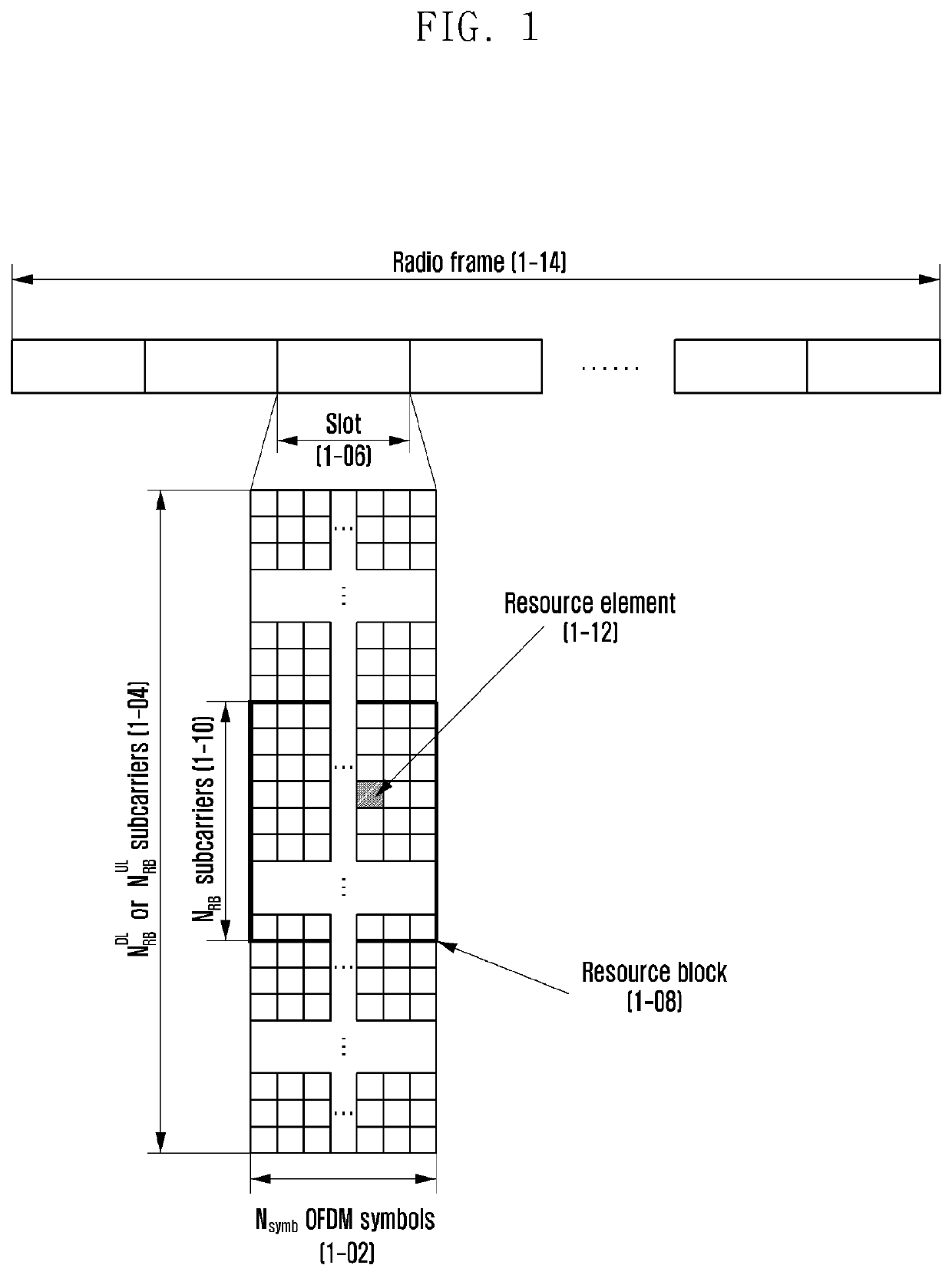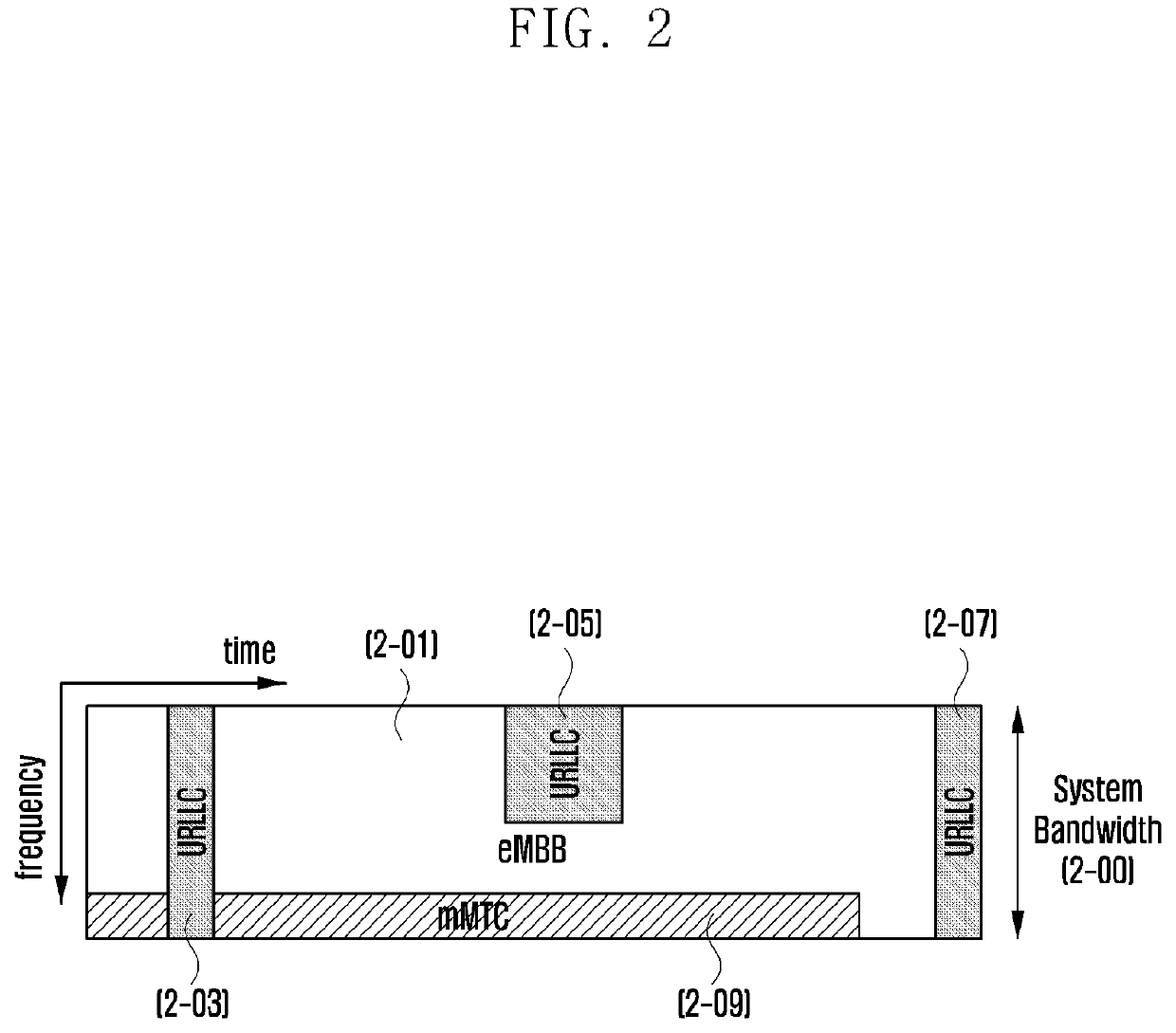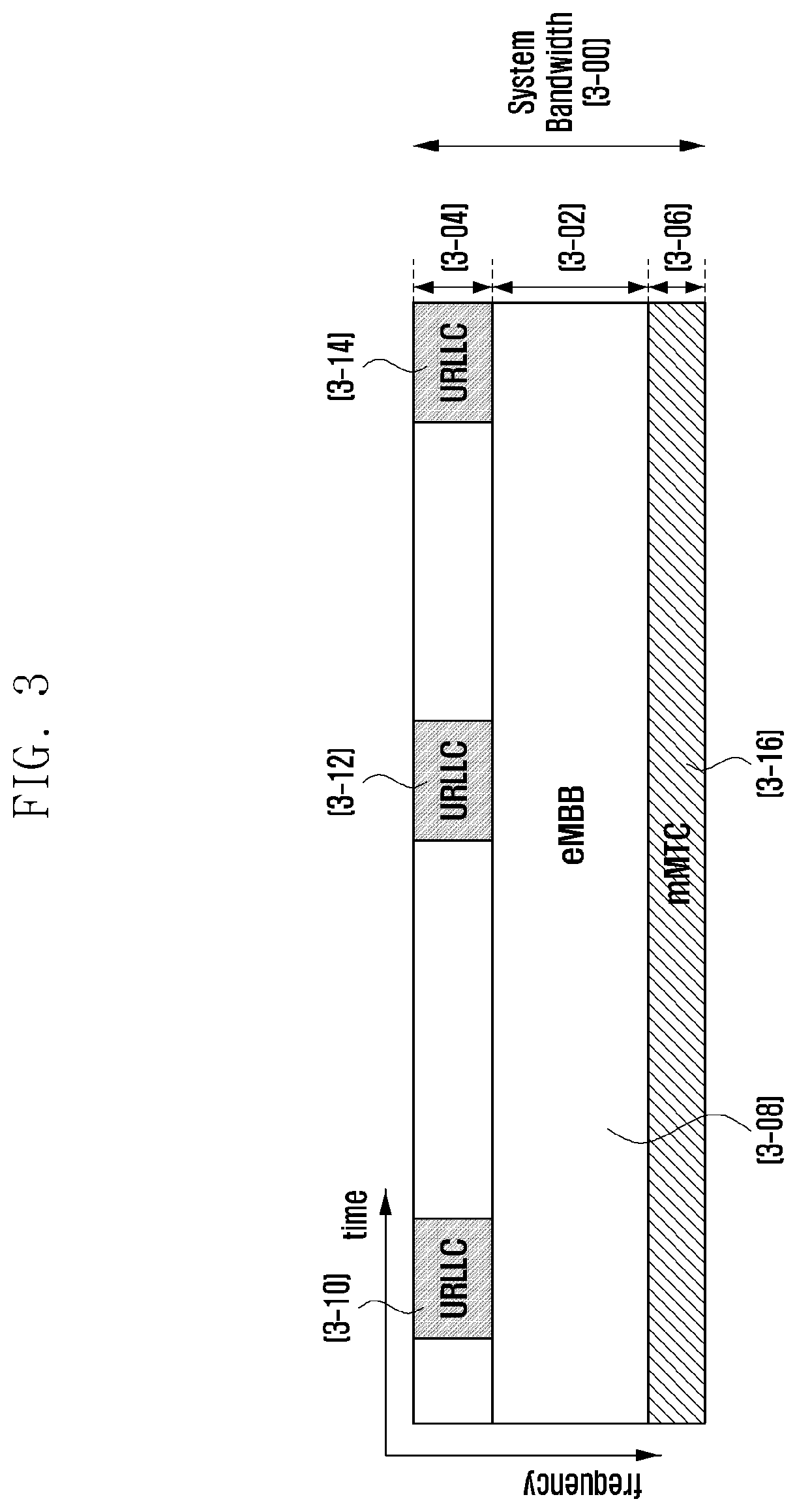Method and device for transmitting and receiving data in communication system
a communication system and data transmission technology, applied in the field of communication systems, can solve problems such as restrictions on scheduling and terminals that cannot process data, and achieve the effect of efficient transmission and receiving data
- Summary
- Abstract
- Description
- Claims
- Application Information
AI Technical Summary
Benefits of technology
Problems solved by technology
Method used
Image
Examples
first embodiment
[0121]The first embodiment relates to a method and device for performing scheduling so as not to exceed a maximum data rate of a terminal in performing data retransmission and for receiving data. In this embodiment and subsequent embodiments, data may be referred to as a TB or a transport block.
[0122]When accessing a base station, a terminal can report the capability of the terminal to the base station. The capability of the terminal may include at least one of parameters to be used for calculating the maximum data rate of the terminal, such as the maximum number of layers, the maximum modulation order, and the like that the terminal can support.
[0123]The maximum data rate of the terminal may be calculated, for example, as given in Equation 1, based on the capability of the terminal reported to the base station and parameters configured for the terminal by the base station through RRC signaling. The maximum data rate of the terminal may be determined based on the baseband processing...
second embodiment
[0152]The second embodiment relates to another method and device for performing scheduling so as not to exceed a maximum data rate of a terminal in performing data retransmission and for receiving data. In this embodiment and subsequent embodiments, data may be referred to as a TB or a transport block.
[0153]When accessing a base station, a terminal can report the capability of the terminal to the base station. The capability of the terminal may include at least one of parameters to be used for calculating the maximum data rate of the terminal, such as the maximum number of layers, the maximum modulation order, and the like that the terminal can support.
[0154]The maximum data rate of the terminal may be calculated, for example, as given in Equation 1, based on the capability of the terminal reported to the base station and parameters configured for the terminal by the base station through RRC signaling. The maximum data rate of the terminal may be determined based on the baseband pro...
third embodiment
[0171]The third embodiment relates to another method and device for performing scheduling so as not to exceed a maximum data rate of a terminal in performing data retransmission and for receiving data. In this embodiment and subsequent embodiments, data may be referred to as a TB or a transport block.
[0172]When accessing a base station, a terminal can report the capability of the terminal to the base station. The capability of the terminal may include at least one of parameters to be used for calculating the maximum data rate of the terminal, such as the maximum number of layers, the maximum modulation order, and the like that the terminal can support.
[0173]The maximum data rate of the terminal may be calculated, for example, as given in Equation 1, based on the capability of the terminal reported to the base station and parameters configured for the terminal by the base station through RRC signaling. The maximum data rate of the terminal may be determined based on the baseband proc...
PUM
 Login to View More
Login to View More Abstract
Description
Claims
Application Information
 Login to View More
Login to View More - R&D
- Intellectual Property
- Life Sciences
- Materials
- Tech Scout
- Unparalleled Data Quality
- Higher Quality Content
- 60% Fewer Hallucinations
Browse by: Latest US Patents, China's latest patents, Technical Efficacy Thesaurus, Application Domain, Technology Topic, Popular Technical Reports.
© 2025 PatSnap. All rights reserved.Legal|Privacy policy|Modern Slavery Act Transparency Statement|Sitemap|About US| Contact US: help@patsnap.com



